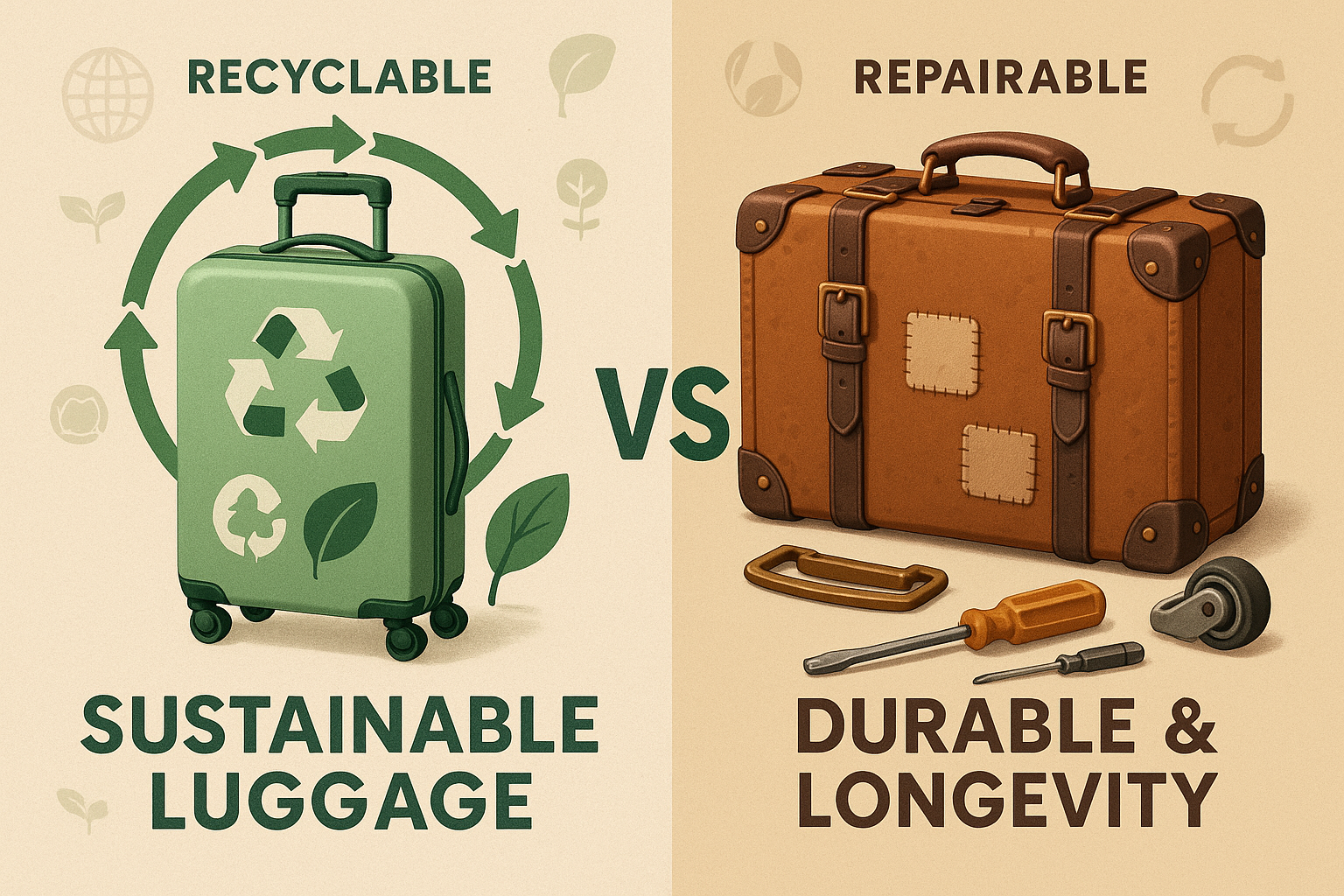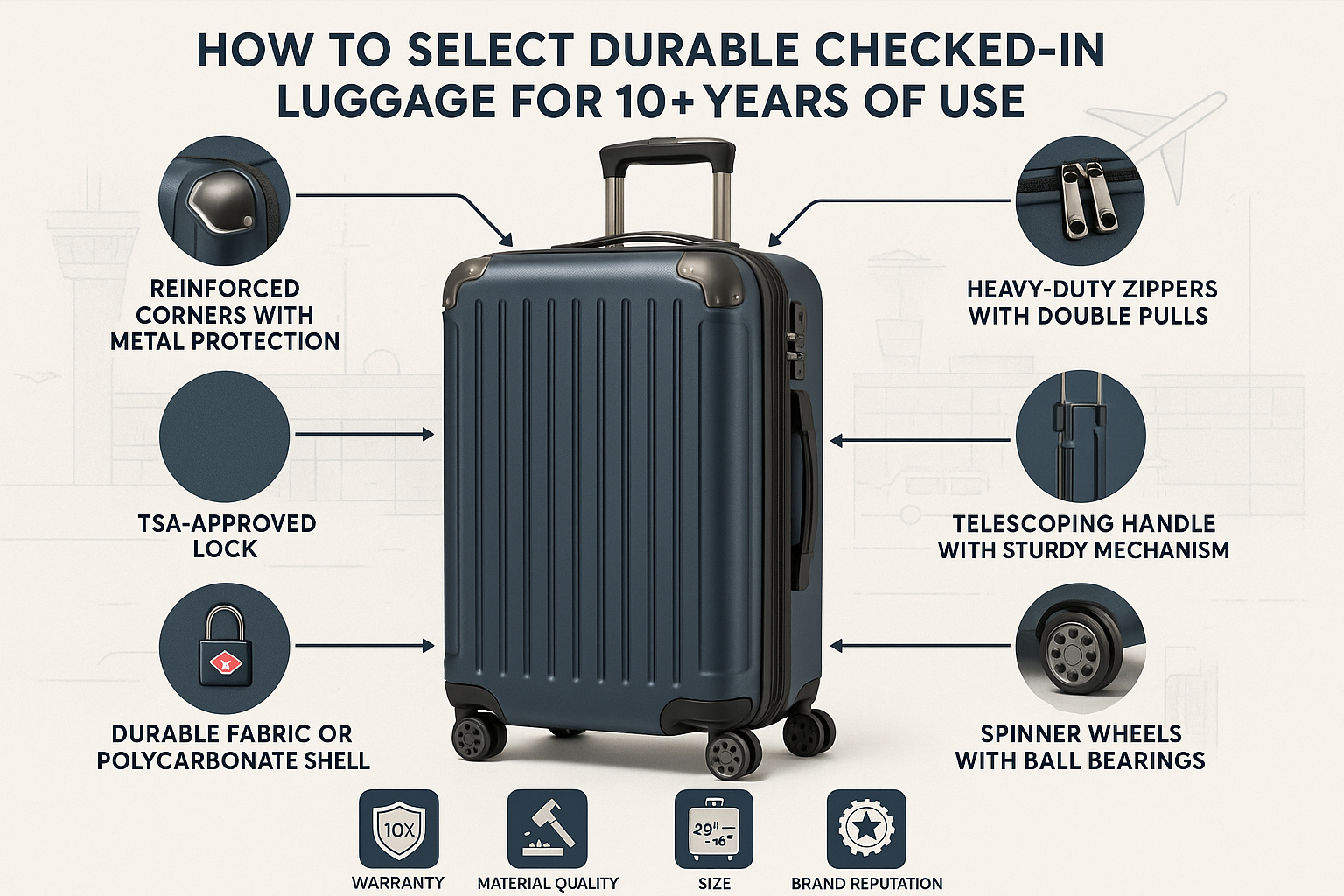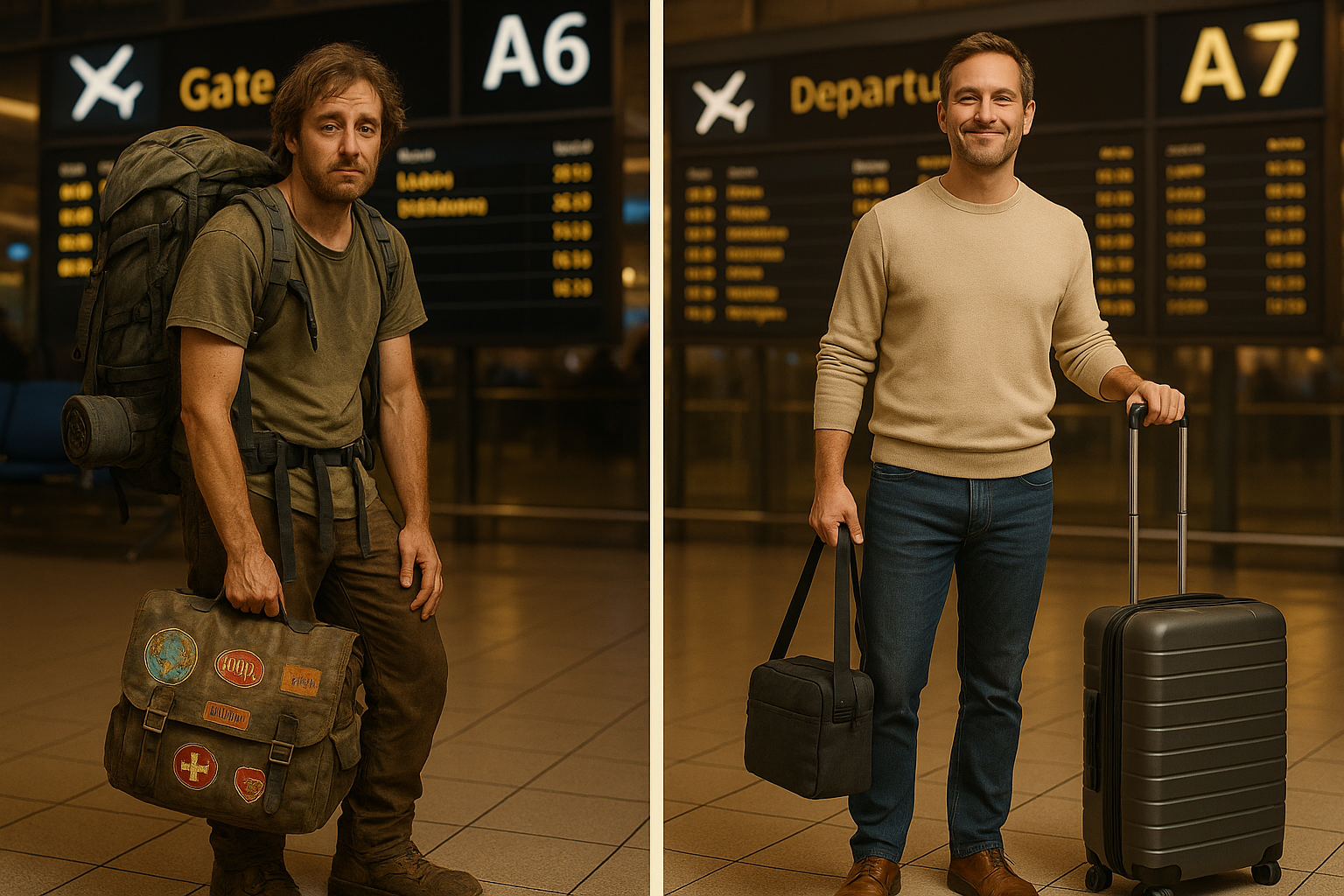
Recyclable vs. Repairable: Which Checked-In Luggage Is Truly Sustainable?
In the age of climate consciousness and responsible consumption, the customers who get to travel are posing more sophisticated questions: not only to airlines and hotels, but also to their luggage. With the slogan of the end of the era of quick, cheap consumption, the importance of sustainability as a value of the ultimate things we carry around with us has been built and developed. The point is that durability is no longer the only question regarding checked-in luggage, especially in cases when such luggage is often tossed, dragged, and loaded under pressure. It is a long-term effect.

That leads to an emerging discussion in the travel goods market: Is recyclable luggage greener than repairable luggage? Or are we supposed to seek both of them?
It is time to get practical and look into the true meanings of all these words and how brands like Koora are setting the way to go in the future of luggage by making them strong, sustainable, and smart.
Why the Shift Toward Sustainable Luggage Matters
Each year, broken wheels, cracked shells, or failed zippers result in millions of suitcases being disposed of. Most of them are crafted using virgin plastics or synthetic materials that are hard, or even impossible, to recycle. They continue to add up in landfills, slowly making the biggest contribution to the mounting problem of world garbage.
The major flaw of travelling on a flight is its checked-in luggage rather than its carry-ons. It is man-handled by the airport personnel, contains extremely varying weather conditions and at times is crammed full. When it breaks on the way, the inconvenience of then replacing it is not the only downside: that would be wasteful. This is why the era of single-use and irresponsible disposal is over, and intentionally designed long-lasting and durable bags are the standard now.
Understanding Recyclable Luggage
Recyclable luggage can be constructed so that it considers what happens to it at the end of its life. Brands that emphasise recyclability have their products designed to be recyclable, i.e. the products can be broken down and used to develop new products. The common ones include recycled polycarbonate (hard shells) and rPET (recycled polyester) in linings, and soft-shell exteriors.
Recyclable luggage helps to create a circular economy where something that would be deemed as waste can be turned into a new resource. As a product, it is especially healthy when manufactured using post-consumer materials, i.e., plastics that otherwise would end up in the ocean or in used bottles. The materials lower the level of virgin resources based on fossil fuels and lower the waste reaching the environment.
However, the condition is the loophole to recyclability. The separation of materials should be done properly. Combined materials, e.g. bags made out of metals, plastics, fabrics and glues, are hard to separate and recycle. Second, recycling requires local infrastructure, which can be rather deficient in some areas. When the recyclable bag fails to go through the recycling process, it may go to the same landfill as the conventional ones.
The Power of Repairable Luggage
Repairable luggage takes a different approach: instead of planning for disposal, it’s built to be fixed. The philosophy here is simple—use less by using longer.
A repairable suitcase features modular components: replaceable wheels, zippers, handles, and even panels. Rather than discarding the entire bag when one part fails, the traveller can swap out the broken piece and extend the life of the product by years, even decades. This dramatically reduces the environmental footprint associated with production and waste.
The benefits of repairability are obvious. It reduces consumption. It rewards good design. And it shifts the mindset from replacing to maintaining. But it also relies on the consumer’s commitment to maintenance and access to repair services. If spare parts aren’t readily available or if the manufacturer doesn’t support repairs, the concept fails in practice.
What’s More Sustainable—Recyclable or Repairable?
When we consider sustainability over the full lifecycle of a suitcase, repairability often has the edge. A bag that lasts ten years because it’s easy to maintain is far more eco-friendly than one that breaks after two years, even if that broken bag is made from recycled material.
Why? Because extending a product’s life reduces the demand for manufacturing more. Every new suitcase created uses raw materials, water, and energy. Preventing production through longevity is more powerful than offsetting its end through recycling.
However, this doesn’t mean recyclability should be dismissed. When luggage finally reaches the end of its usable life—whether after 5, 10, or 15 years—being recyclable is what makes it truly circular. A suitcase that’s both repairable and recyclable is the gold standard.
Koora: Building for Longevity and Responsibility
Not many brands fit this mixed model better than the new age travel brand, Koora, which is inculcated in creating checked-in baggage that is repairable and recyclable.
The hard-shell suitcases produced by Koora are made of recycled polycarbonate, a material that has a good set of properties that allows the suitcases made of this material to be strong, flexible, and circular. Combined with the minimalist design and modular components of Koora, it is much more than a green material, and it turns into the basis of a long-lasting travel companion as well.
Easy-to-replace wheels and handles are all parts of the brand that need changing, so the whole suitcase does not need to be thrown away. Their strategy minimises the effort to be exerted by the consumer and leaves travellers with the confidence to handle their luggage with minimal effort. It is not a feature but a philosophy.
Alongside the materials and fixes, thoughtful packaging and sustainable sourcing and transparent warranties are also what Koora practices. The revolving concept behind their whole ecosystem is to produce less waste through better-produced products.
Choosing Luggage That Lasts (and Leaves Less Behind)
The next time you need checked-in luggage that is made to meet your values and stand the test of time across several trips, this is what you should look out for:
-
Recycled materials: Preferably post-consumer and certified for quality.
-
Modular construction: Can you replace the wheels or zippers easily?
-
Brand transparency: Do they support repair services or provide spare parts?
-
Minimalist design: Simpler structures are often easier to repair and recycle.
-
Durability tested: Does the brand test for drops, temperature changes, and long-term wear?
Koora fits all these features, and this luggage will give you a blast of strength to be strong and sustainable at the same time and be very functional and responsible as well.
Final Thoughts: Travel Light on the Planet
Being sustainable is no longer an option. It is a responsibility.
As far as the positioning of who would argue for a recyclable piece vs repairable luggage, whose side is right? It is concerned with the selection of products that will help in extending to a cleaner lifecycle; how they are constructed, how they will be serviced, and finally, how they will depart the world.
We, being conscious consumers and travellers in a modern world, must step up to these big issues by leaving behind quick-fix solutions. Our luggage must be the kind that we can respect and admire, not only in its look but also in its working necessities too.
The checked-in luggage does not have to be a wasteful practice, especially with brands such as Koora in the lead. It may be fixable, recyclable, and incredibly durable, and similarly, the memories that it is used to carry.



Leave a comment
This site is protected by hCaptcha and the hCaptcha Privacy Policy and Terms of Service apply.